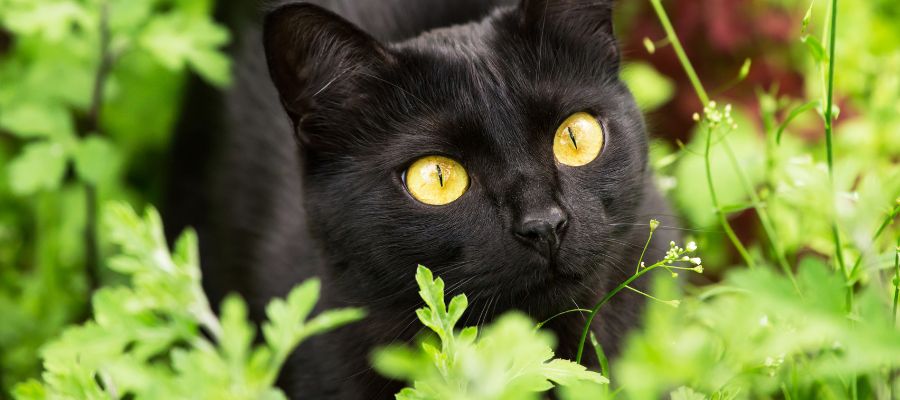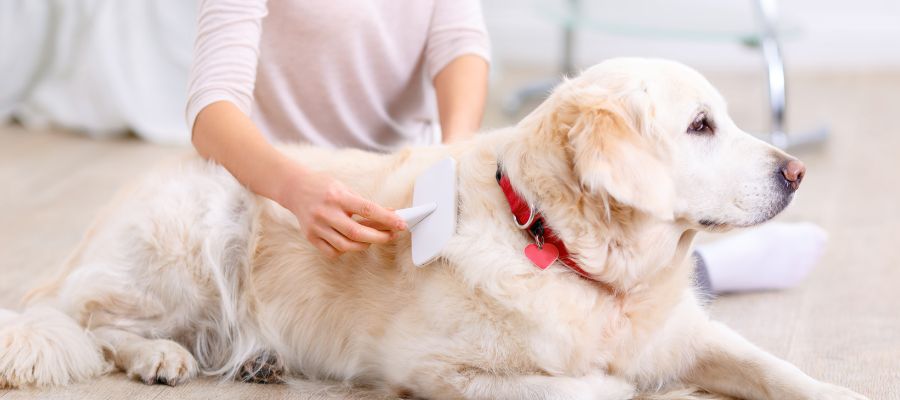Signs your pet has a pollen allergy
The cause of the allergies is the same in pets as it is in humans but the signs can be a little different. In humans, you might expect a runny nose, watery eyes, and feeling short of breath but these are much less common in our pets. Here's what to look out for instead:
- Licking or biting their paws
- Lots of scratching
- Red and sore looking skin, especially around eyes, ears and between paws or on their tummy
- Shaking their head
- Rubbing their ears or muzzle
- Tired or lethargic, particularly on days when the pollen count is high.
If you notice your pet showing any of these signs, call your vet for an appointment. Don’t assume the signs are due to allergies - some of these symptoms could be due to other health issues which your vet may need to rule out before treating your pet for allergies.
It can sometimes be difficult to find out exactly what is causing your pet's allergy. However, if it's worse in summer and better in winter, pollen is the most likely culprit!

Treating pets for pollen allergies
Your vet may recommend some medication to help your pet feel better and more comfortable during the summer. There are lots of different treatment options available, from tablets to skin supplements to medicated shampoos, and your vet will work with you and your pet to find the best combination for them.
Many pets have allergies to more than one thing so your vet might also advise you try a food-elimination trial. This will help to find out if they could be sensitive to anything in their diet. Your vet can give you specific advice and support on how to do this.
It’s really important to keep your pets’ flea control up to date - no matter what the cause of their allergies, irritating fleas will always make them more itchy, so make sure to keep them away with regular treatments.
Don't try home remedies or give any medication to your pet without a prescription. This can be dangerous in the wrong doses, or for certain species.
Wash their bedding weekly. Any bedding that your dog uses will need to be washed regularly otherwise your dog will end up covered in pollen again after every sleep! We recommend a weekly wash and hoover of their bedding and favourite places to lie.
Try adding a skin supplement or oil to your pet's food. These can help strengthen the skin's barrier, soothe itchiness, and calm sensitive skin. Dogs need different essential fats and vitamins than us humans so make sure the supplement you use is made for pets. There are a lot of different skin supplements out there and they really vary in quality. Ask your vet for their recommendation.
What's causing your pet's allergies?
If you can work out which plants and what kind of pollen is causing your pet's problems, you might be able to help your pet avoid them. For example, if your dog is allergic to tree pollen, woodland walks are best avoided when trees are producing pollen.
Try to work out when in the year your pet is most affected by their pollen allergy. This will help give you an idea of the type of pollen causing the problem and the areas you might want to avoid:
- March and April: tree pollen
- May, June and July: grass pollen
- June, July and August: flowering weeds.
These timings can vary depending on where you live. It is also possible to check for allergies using blood and skin tests, but unfortunately, this type of testing isn’t 100% reliable.
Walkies: how to help your allergic dog

You can't keep your dog indoors for months on end if pollen allergies hit – they'll still need regular walkies! So what can you do during those months your pet is affected by allergies?
- Check the pollen forecast each day so you know what to expect.
- Plan walkies for before dawn, late afternoon or early evening. The pollen count is usually lower at these times.
- Keep dogs on a lead near grass. A quick roll in the grass can leave their fur covered in pollen, causing hours or even days of misery.
- Wipe their fur, particularly their paws and muzzle after every walk to help remove any tiny traces of pollen. Specialist pet wipes or even just a damp face cloth are ideal for this. If your dog is really sensitive you can rinse them with water – or medicated shampoo – after walks.
- Keep up with the grooming. A good daily brushing will help to remove any pollen that is clinging to their fur. Keeping longhaired dogs' fur trimmed short could help reduce pollen problems – and will keep them cool in hot weather, too!
- Wash them weekly. A weekly bath can help to get rid of any lingering pollen – a specialist hypo-allergenic pet shampoo from your vet is ideal - many have anti-bacterial ingredients to help avoid skin infections if your pet does decide to have a good scratch.
